 W
WMagnus "Mac" Freiherr von Braun was a German chemical engineer, Luftwaffe aviator, rocket scientist and business executive. In his 20s he worked as a rocket scientist at Peenemünde and the Mittelwerk.
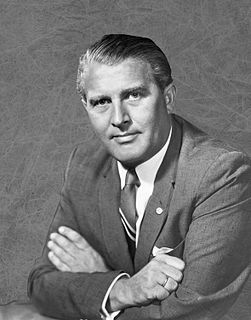 W
WWernher Magnus Maximilian Freiherr von Braun was a German-American aerospace engineer and space architect. He was the leading figure in the development of rocket technology in Nazi Germany and a pioneer of rocket and space technology in the United States.
 W
WKonrad Dannenberg was a German-American rocket pioneer and member of the German rocket team brought to the United States after World War II.
 W
WKurt Heinrich Debus was a German-born American rocket engineer and former Schutzstaffel member, the first director of NASA's Launch Operations Center.
 W
WMajor-General Dr. Walter Robert Dornberger was a German Army artillery officer whose career spanned World War I and World War II. He was a leader of Nazi Germany's V-2 rocket programme and other projects at the Peenemünde Army Research Centre.
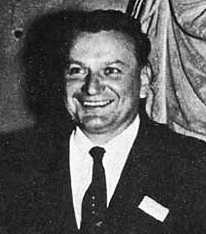 W
WKrafft Arnold Ehricke was a German rocket-propulsion engineer and advocate for space colonization.
 W
WDieter Grau was a German-born American aerospace engineer and member of the "von Braun rocket group", at Peenemünde (1939–1945) working on the V-2 rockets in World War II. He was among the engineers who surrendered to the United States and traveled there, providing rocketry expertise via Operation Paperclip, which took them first to Fort Bliss, Texas. Grau was sent by the U.S. Army to White Sands in 1946 to work on the assemblage and testing of the V-2. His wife joined him there in 1947. While von Braun was on standby at Fort Bliss, Grau and other German aerospace engineers busily launched V-2s for U.S. scientists to analyze. A total of 67 V-2s were launched at White Sands.
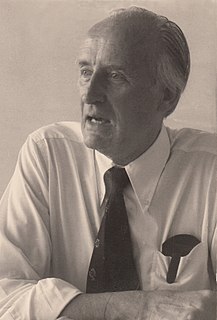 W
WHelmut Gröttrup was a German engineer, rocket scientist and inventor of the smart card. During World War II, he worked in the German V-2 rocket program under Wernher von Braun. From 1946 to 1953 he headed a group of 170 German scientists who were forced to work for the Soviet rocketry program under Sergei Korolev. After returning to West Germany in December 1953, he developed data processing systems and contributed to early commercial applications of computer science. In 1967 Gröttrup invented the basic principles of the smart card as a forgery-proof "key" for secure identification and access control.
 W
WWalter Haeussermann was a German-American aerospace engineer and member of the "von Braun rocket group", both at Peenemünde and later at Marshall Space Flight Center, where he was the director of the guidance and control laboratory. He was awarded the Department of the Army Decoration for Exceptional Civilian Service in 1959 for his contributions to the US rocket program.
 W
WWalter Jacobi was a rocket scientist and member of the "von Braun rocket group", at Peenemünde (1939–1945) working on the V-2 rockets in World War II.
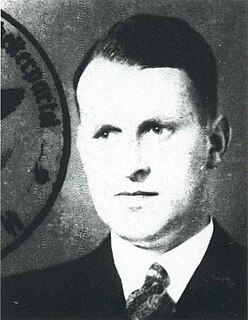 W
WHans Kammler was an SS-Obergruppenführer responsible for Nazi civil engineering projects and its top secret weapons programmes. He oversaw the construction of various Nazi concentration camps before being put in charge of the V-2 rocket and jet programmes towards the end of World War II. Kammler disappeared in May 1945, in the final days of the war. There has been much conjecture regarding his fate, but it remains a mystery.
 W
WGeorg Johannes Rickhey was a German engineer and the general director of Mittelwerk GmbH in Dora-Mittelbau.
 W
WKlaus Riedel was a German rocket pioneer. He was involved in many early liquid-fuelled rocket experiments, and eventually worked on the V-2 missile programme at Peenemünde Army Research Center.
 W
WArthur Louis Hugo Rudolph was a German rocket engineer who was a leader of the effort to develop the V-2 rocket for Nazi Germany. After World War II, the United States Government's Office of Strategic Services (OSS) brought him to the U.S. as part of the clandestine Operation Paperclip, where he became one of the main developers of the U.S. space program. He worked within the U.S. Army and NASA, where he managed the development of several systems, including the Pershing missile and the Saturn V Moon rocket. In 1984, the U.S. Government investigated him for war crimes, and he agreed to renounce his United States citizenship and leave the U.S. in return for not being prosecuted.
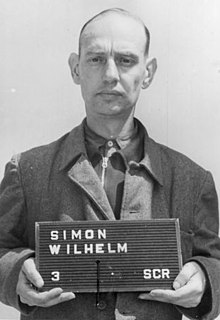 W
WWilhelm Simon was a German SS-Hauptscharführer. During World War II he held administrative posts at the Nazi concentration camps of Buchenwald and Mittelbau-Dora and was convicted of war crimes by the United States in 1947.